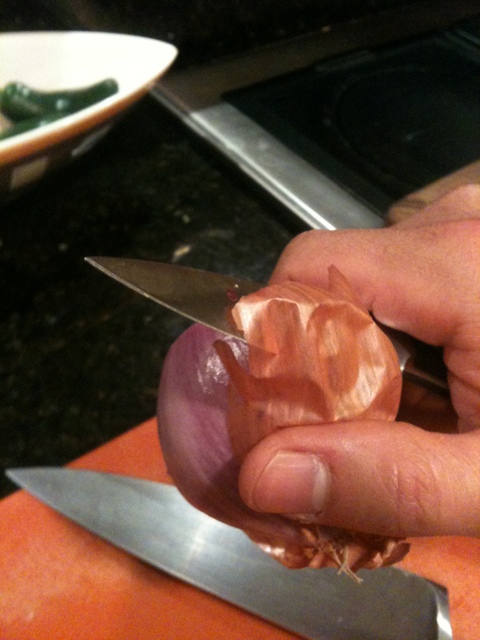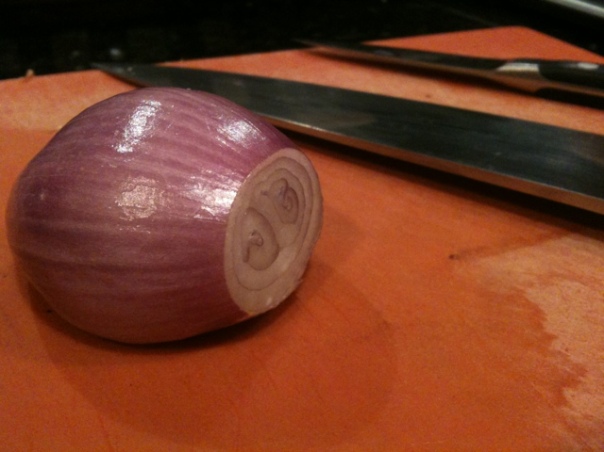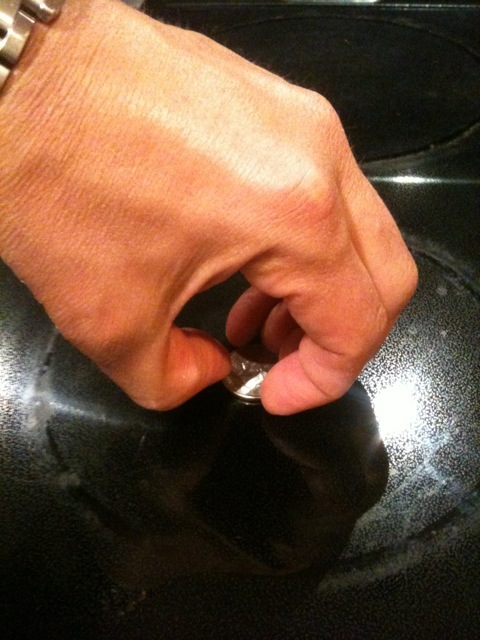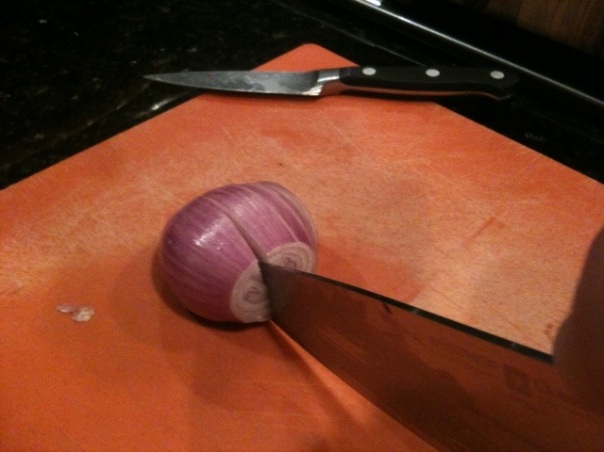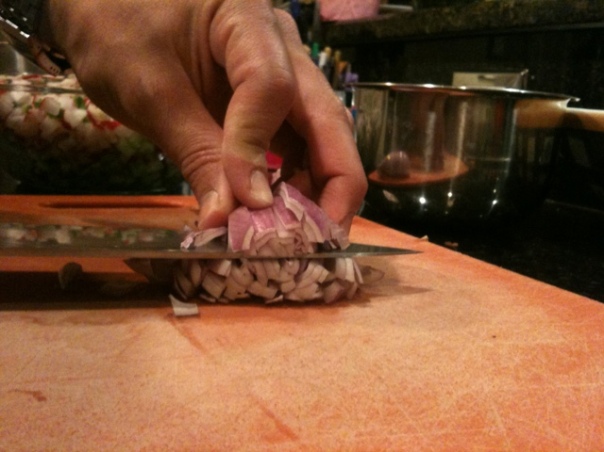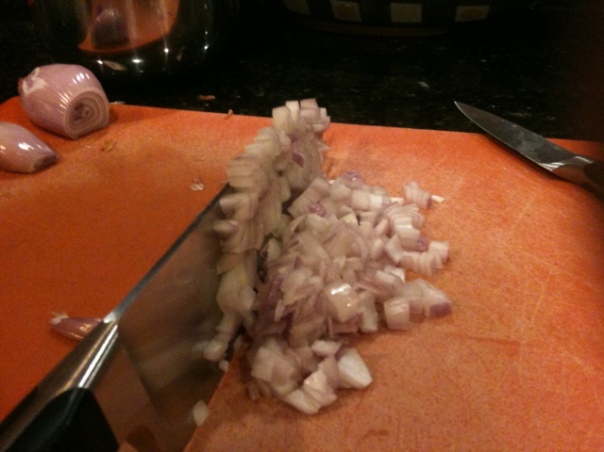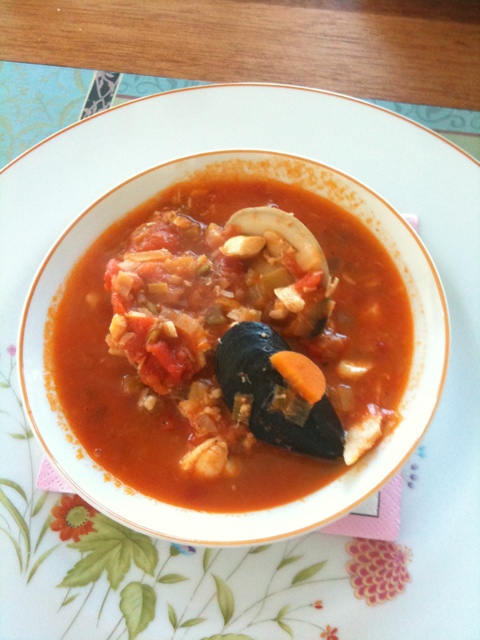Every recipe you see likely has some variation of “1 onion – medium dice,” or “minced shallot,” or “chopped yellow onion.” Aromatics vegetables pretty much universal in the cooking world, with most cultural cuisines having some variation on the same theme: French Mirepoix (onion, carrot, celery), Spanish Sofrito (onion, garlic, tomato), and even the many Asian dishes that use scallion, garlic and ginger as the backbone.
So how do you cut an onion so you a) end up with pieces of relatively equal size, b) break it down quickly, and c) walk away with all ten fingers. Try this:
Start by slicing the not-root end off the onion (I used a shallot to demonstrate because I needed shallots), and peeling the thick skin off with a paring knife (or your fingers…).
If you’re chopping an onion, cut it in half lengthwise (through the root tuft) and lay each half down on the flat side; if you’re using a shallot, lay it on its flattest edge. (This is the #1 rule of cutting things – Flat side down; No flat side? Make one!)
Hold the onion firmly with your left hand (hint: to get a feel for the proper hand position, try to pick a quarter up off the counter).
Now make slices lengthwise almost all the way through to the root end, but leaving just a little onion uncut (to hold it all together so you don’t have to). The width of these slices is the eventual size of your dice – if you want a small dice, cut a lot of slices.
Now comes a tricky part: Turn your knife on it’s side and, keeping your knife parallel to the cutting board, slice through the meat of the onion, still slicing toward to root end (also, notably, toward your hand).
Again – these cuts determine the eventual size of your dice, so try to cut them about the same size as your first slices. (Also – don’t cut your finger tips off. Use a smooth controlled sawing motion with the knife and take your time.)
Now simply cut even slices off the end of the onion, and you’ll turn out perfectly even dices, and look like a semi-pro doing it.
(If you want to be a real pro, watch a few Jacques Pepín clips where he does this to individual cloves of garlic using a crazy-sharp paring knife – while talking to the camera! – faster than I can even think. That’s a pro.)
